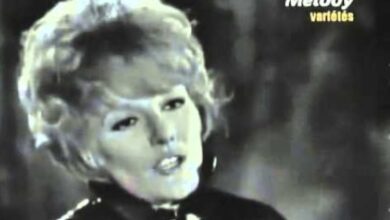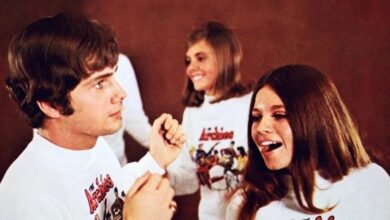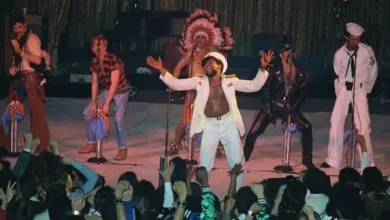Roy Orbison’s ‘Only the Lonely’ Redefined Pop Music in 1960
Roy Orbison’s “Only the Lonely” (1960) may have seemed like just another heartbreak ballad at first listen, but it quickly proved to be a transformative force in popular music. Released in May 1960, the song marked a pivotal moment in Orbison’s career and the music landscape at large. Its haunting orchestration, aching vocal delivery, and deeply emotional lyrics resonated with audiences, climbing to number two on the Billboard Hot 100 and securing a number one spot in the UK. More than just a chart success, “Only the Lonely” established Orbison’s signature sound, one defined by vulnerability and operatic grandeur, and laid the groundwork for the sophisticated pop ballads that would follow.
Born in Vernon, Texas, Roy Orbison was no stranger to hardship. His early musical ambitions led him to Sun Records, where he briefly rubbed shoulders with legends like Elvis Presley and Johnny Cash. However, unlike his rockabilly contemporaries, Orbison’s natural inclination toward emotional balladry set him apart. After struggling to find his footing in the competitive industry, Orbison signed with Monument Records, where he was encouraged to explore a more refined, cinematic sound. His collaboration with producer Fred Foster and songwriter Joe Melson would soon yield the heart-wrenching brilliance of “Only the Lonely.”
The inspiration behind the song was deeply personal. Orbison and Melson, both intimately familiar with the pain of lost love, channeled their experiences into the lyrics. Originally intended for Elvis Presley or the Everly Brothers, the song was ultimately recorded by Orbison himself — a decision that proved fateful. His soaring vocals, delivered with an almost operatic intensity, lent the track an emotional weight that no one else could have matched. From its opening hum to the aching crescendo of the final verse, “Only the Lonely” became a vehicle for Orbison’s unparalleled ability to convey heartache.
In the studio, Orbison’s perfectionist tendencies shaped the track’s lush, layered production. Foster’s decision to use a sparse rhythm section, combined with a string arrangement that built gradually, created a sense of mounting sorrow. Orbison’s voice, wavering yet resolute, became the emotional anchor. Notably, his use of falsetto — a daring choice at the time — added a haunting vulnerability that captivated listeners. The result was a record that felt both timeless and revolutionary.
Upon its release, “Only the Lonely” earned widespread acclaim. Critics praised its emotional depth, and fans responded with equal enthusiasm. The song’s success was undeniable, spending 22 weeks on the charts and receiving a Gold Record certification. In the UK, it solidified Orbison as an international star, reaching the top of the charts and marking his first major crossover hit. Its commercial triumph not only elevated Orbison’s career but also demonstrated that mainstream audiences were hungry for music that delved into raw, personal emotion.
The cultural impact of “Only the Lonely” was far-reaching. At a time when rock and roll was largely characterized by upbeat rhythms and rebellious energy, Orbison’s emotionally charged ballad stood in stark contrast. It bridged the gap between pop and the growing sophistication of adult contemporary music, influencing countless artists across genres. Orbison’s bold embrace of emotional vulnerability paved the way for later performers like Elton John, Chris Isaak, and k.d. lang — all of whom cited him as a formative influence.
For Orbison, the song’s success was transformative. It granted him the creative freedom to pursue a series of equally ambitious ballads, including “Crying” and “In Dreams.” International tours followed, cementing his status as a global sensation. His dramatic stage presence and signature dark sunglasses became iconic, further enhancing his mystique. “Only the Lonely” marked the beginning of a decade-long period of success that saw Orbison consistently topping the charts.
The song’s enduring legacy also extended to its countless reinterpretations. Artists like Chris Isaak and Glen Campbell have paid homage to Orbison’s masterpiece, each adding their own twist while preserving the song’s emotional essence. Its influence can be heard in film soundtracks, from David Lynch’s dreamlike use of Orbison’s music in Blue Velvet to countless romantic dramas. Each time “Only the Lonely” is revisited, its emotional resonance remains undiminished.
The year 1960 was also a significant turning point for Orbison personally. Following the success of “Only the Lonely,” he experienced the highs of international fame and the demands of relentless touring. Though personal tragedies would later cast a shadow over his life, Orbison’s determination and creative spirit endured. His ability to transform personal pain into artistic expression remained his most defining trait.
Decades after its release, “Only the Lonely” remains a fixture in the annals of rock and pop history. Its inclusion in lists of the greatest songs of all time, from publications like Rolling Stone and NME, speaks to its timelessness. Beyond its chart performance, the song’s emotional sincerity continues to resonate with listeners facing their own moments of loneliness and heartbreak.
Roy Orbison’s impact on music went far beyond commercial success. With “Only the Lonely,” he introduced a new level of emotional complexity to popular music, demonstrating that heartbreak could be both devastating and beautiful. His legacy is evident in the countless artists who strive to capture the same raw emotion in their work. Through the echo of his voice and the poignant swell of strings, “Only the Lonely” endures — a testament to the enduring power of vulnerability in music.



